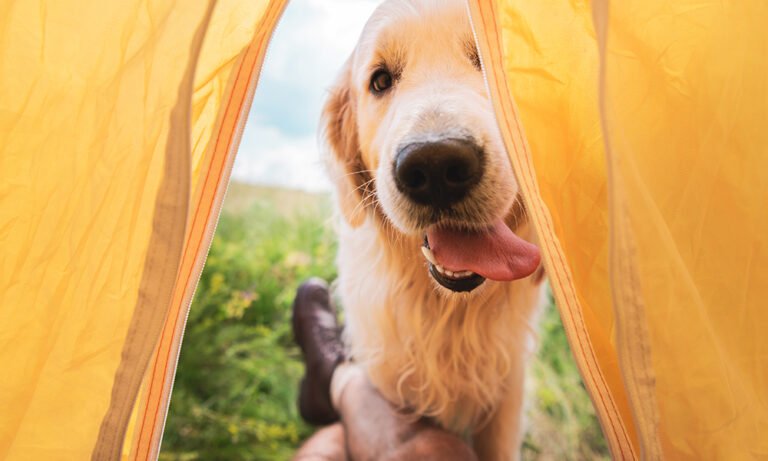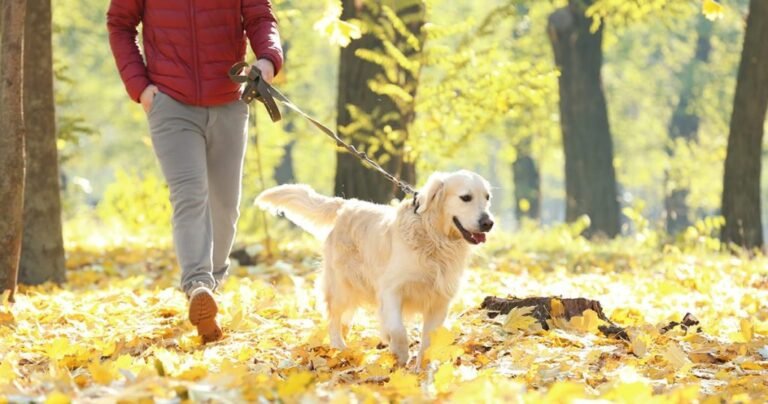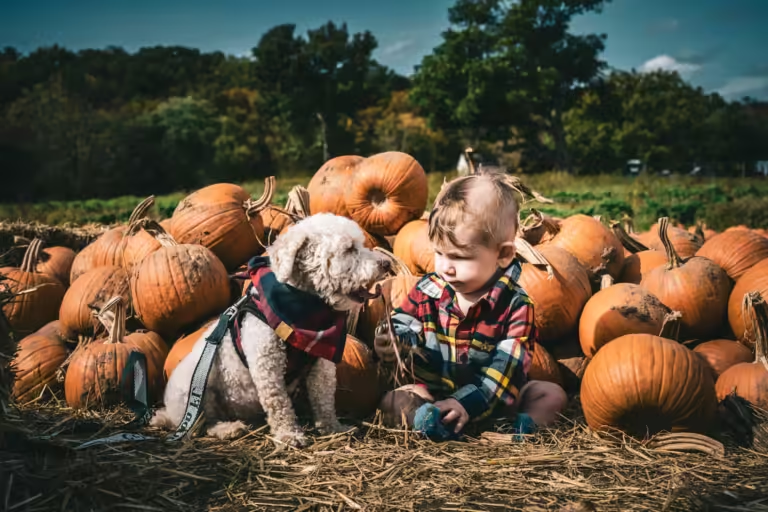Wellness for your furry friend during the winter months is necessary to ensure they remain happy and healthy. As temperatures drop, it’s important for you to adapt your dog’s routine and care to meet their needs. From keeping them warm to ensuring they get the right exercise and nutrition, there are several ways you can enhance their winter experience. In this guide, you will discover practical tips and strategies to protect your pup during the colder season, ensuring they thrive even when the weather turns chilly.
Understanding Winter Challenges for Dogs
To keep your dog happy and healthy during the winter months, it’s important to understand the various challenges they face. Cold temperatures, icy surfaces, and shorter daylight hours can impact their daily routines and overall well-being. Additionally, seasonal changes can exacerbate certain health issues, making it imperative for pet owners to be proactive in addressing these factors to ensure their furry friends enjoy a safe and comfortable winter.
Common Health Issues in Cold Weather
Issues like frostbite, hypothermia, and dry skin are prevalent in winter months. Smaller or short-haired breeds may be especially vulnerable, requiring extra care to keep them warm. Joint pain can also flare up during colder weather, impacting their mobility. As a responsible owner, you should be on the lookout for any signs of discomfort or illness and act promptly to alleviate their suffering.
Factors Affecting Your Dog’s Comfort
You should consider various factors that affect your dog’s comfort during winter months. These include breed, age, and health status, all of which influence how your dog handles cold weather. Other factors to take into account include:
- Coat thickness and length
- Outdoor activity levels
- Housing conditions
- Nutritional needs
Assume that by keeping these factors in mind, you’ll be better equipped to create a warm and comfortable environment for your pet.
Comfort is imperative for your dog during chilly months, as it directly affects their mood and overall health. A well-insulated shelter, appropriate attire for outdoor outings, and proper nutrition will greatly enhance their comfort level. Key considerations include:
- Providing warm bedding
- Regular grooming to promote a healthy coat
- Limiting exposure to harsh weather conditions
- Monitoring their hydration
Assume that by taking these steps, you can significantly improve your dog’s experience throughout the winter season.
How to Keep Your Dog Warm
Clearly, keeping your dog warm in the winter months is necessary for their comfort and overall health. Consider layering their attire with sweaters, dog coats, and booties to protect them from cold weather when stepping outside. Ensure that their outdoor time is limited, especially during harsh conditions, as this will help prevent them from becoming too cold. Checking regularly for signs of discomfort, like shivering or reluctance to go outside, will help you gauge when it’s time to bring them back indoors.
Choosing the Right Winter Gear
Assuming that your dog enjoys the outdoors in winter, selecting the right winter gear is important for their warmth and safety. Look for waterproof coats that provide insulation and are designed to fit snugly to prevent cold air from entering. Additionally, booties can protect their paw pads from ice and salt, helping to avoid cuts and irritation. Don’t forget to choose gear that allows for natural movement and doesn’t hinder their ability to run and play.
Creating a Cozy Indoor Environment
While outdoor activities may be limited, creating a cozy indoor environment will keep your dog warm and content during the cold months. Invest in a comfortable dog bed that offers good support and warmth, placing it in a quiet area away from drafts. Use blankets to provide additional warmth, and consider heated pet pads if your dog enjoys curling up. Dim the lights and create a soothing atmosphere, so your furry friend feels relaxed and safe even when spending longer hours indoors.
Understanding how to create a cozy indoor environment is vital for your dog’s winter wellness. Consider using space heaters or blankets to warm up specific areas where your dog likes to relax. Ensure that their sleeping space is away from cold doors or windows, as drafts can make it uncomfortable. You can also enrich their indoor experience with interactive toys, gentle play, and quality time with you. These elements not only keep them warm but help prevent boredom during the colder months.
Nutrition and Hydration Tips
If you want to keep your dog thriving during the colder months, focus on their nutrition and hydration. Here are some tips to consider:
- Increase lean protein to support energy levels.
- Opt for high-quality dog food that is rich in nutrients.
- Supplement with omega fatty acids for healthy skin and coat.
- Ensure constant access to fresh water, particularly when indoors.
Knowing how to tailor your dog’s diet and hydration can go a long way in supporting their winter wellness.
Adjusting Your Dog’s Diet for Winter
For many dogs, an adjustment in diet may be necessary during winter months. You might want to increase the caloric intake slightly, especially if your dog loves outdoor activities. This can help them maintain energy levels and body heat. Additionally, consider incorporating warm food, like slightly heated wet dog food or homemade broth, to make mealtime more appealing in the cold.
Ensuring Proper Hydration
There’s a common misconception that dogs need less water during winter, but hydration is just as important in colder months. Water helps maintain healthy organ function and supports overall well-being. Ensure your pup has access to clean, fresh water at all times, and consider using a heated bowl to prevent freezing. Check regularly to make sure it stays full and doesn’t get too cold.
Proper hydration can often get overlooked during winter. It’s vital to monitor your dog’s water intake, as they may not drink as much if it’s too cold outside. Encouraging hydration through activities, like offering water after walks or using ice cubes as a treat, can also keep your dog interested in staying hydrated. Be attentive to signs of dehydration, such as lethargy or loss of appetite, to ensure your dog remains healthy throughout the winter.
Exercise Essentials for Cold Months
Now that the chilly months are here, it’s important to adapt your dog’s exercise routine to keep them happy and fit. Shorter days can make it tempting to stay indoors, but regular physical activity is crucial for your dog’s mental and physical health. By incorporating varied exercises, both inside and outside, you can ensure your furry friend remains active, energized, and engaged, even in the winter months.
Fun Indoor Activities
An excellent way to maintain your dog’s activity level when it’s too cold outdoors is to get creative with indoor games. Activities like hide-and-seek, tug-of-war, or using puzzle toys can provide mental stimulation and physical exercise. You might also consider setting up an obstacle course with household items, allowing your dog to navigate their way through a fun and challenging environment.
Safe Outdoor Exercise Strategies
With the right precautions, outdoor activities can still be enjoyable and safe during the winter months. Dress your dog in winter gear if necessary, choose safe paths free from ice, and always keep a close eye on their paws for any signs of cold or irritation.
Outdoor exercise can be both refreshing and invigorating when done correctly. Keep walks shorter but more frequent, allowing your dog to explore while reducing the risk of frostbite or injury. Enlist the help of booties to protect their paws and select paths with minimal traffic and snow accumulation. Always monitor their behavior for any signs of discomfort, and adjust your plans accordingly to ensure a fun and safe experience for you both.
Grooming and Skin Care in Winter
Keep your dog looking and feeling great throughout the winter months by prioritizing grooming and skin care. Cold weather can lead to dry skin and discomfort for your furry friend, making regular grooming sessions imperative. Brushing helps remove dead hair and distribute natural oils, keeping their coat healthy while also giving you the chance to check for any irritations or issues. Don’t forget to maintain their ears, paws, and tails, as these areas can be prone to dryness as well during chilly temperatures.
Maintaining Coat Health
For optimal coat health, regular brushing is necessary, as it helps remove loose fur and stimulates oil production in the skin. Choose a brush suitable for your dog’s coat type, and consider a hydrating dog shampoo to keep their skin moisturized. Bathing too frequently can strip away natural oils, so limit baths to once a month or less in winter. Additionally, talk to your vet about incorporating omega fatty acids into your dog’s diet for added skin and coat benefits.
Protecting Paws from Cold Surfaces
There’s a good chance your dog’s paws will be exposed to frigid temperatures and harsh surfaces during winter walks. Ice, snow, and salt can leave their paw pads irritated and cracked, so it’s important to take preventive measures. Invest in dog booties to protect their paws from extreme cold and sharp objects, or apply a paw balm to create a barrier against these harsh elements.
To further protect your dog’s paws, wipe them down with a damp cloth after walks to remove salt and ice build-up. Pay attention to any signs of discomfort like limping or licking, as this may indicate irritation. Regularly check for cuts or cracks on their paw pads, and if needed, apply a moisturizing balm to soothe and hydrate the skin. Taking these steps will ensure your canine companion enjoys the outdoors safely during the winter months.
Socialization and Mental Stimulation
All dogs thrive on socialization and mental stimulation, regardless of the season. During winter months, it’s important to find ways to keep your pup engaged and connected. Activities that encourage interaction with other dogs and people, as well as mental challenges, can help prevent boredom and strengthen your bond. Incorporate playdates, indoor training sessions, or interactive toys to ensure your dog stays mentally sharp and socially happy, even when the weather is less than friendly.
Engaging Activities to Brighten Winter Days
Days can feel long during winter, but you can brighten them with engaging activities tailored for your dog. Indoor games like hide-and-seek or puzzle toys provide entertainment while encouraging problem-solving skills. Consider teaching your dog new tricks or enrolling in a fun class to keep their mind active. Outdoor adventures, when weather permits, can also be invigorating—just ensure to bundle up and monitor their comfort level. Creative activities will not only keep your dog happy but will also enhance your relationship.
Importance of Social Interaction in Cold Weather
You might think that winter weather limits your dog’s opportunities for social interaction, but it doesn’t have to. Finding safe indoor environments or attending dog-friendly events can allow your furry friend to meet new pals and interact with other dogs. You can also arrange indoor playdates with other pet owners or take part in community events that welcome dogs. These social experiences are important not only for their happiness but also for their overall well-being.
Interaction plays a significant role in maintaining a dog’s emotional health, especially during the isolating winter months. Engaging with other dogs and interacting with you can alleviate feelings of loneliness and anxiety. Socialization fosters confidence and helps prevent undesirable behaviors that may arise from boredom or excess energy. By ensuring your dog has regular opportunities to socialize, you help them remain emotionally balanced and well-adjusted, allowing both of you to enjoy the winter season together.
To wrap up
Taking this into account, keeping your dog happy and healthy during the cold months involves mindful care and attention. Ensure that your furry friend is bundled up during outdoor excursions, maintain a balanced diet to boost immunity, and engage in indoor activities to keep them mentally stimulated. Regular vet check-ups can help monitor their health as the weather changes. By prioritizing your dog’s winter wellness, you can create a supportive and loving environment that allows them to thrive even in colder temperatures.







